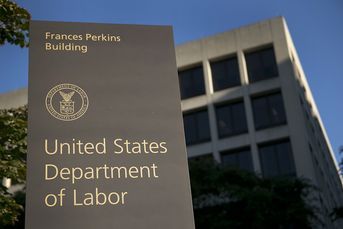MEPs costlier than similarly sized 401(k)s: Study

A new paper that examines costs of multiple-employer plans sponsored by benefits outsourcing firms found that such plans can be expensive
Multiple-employer plans have been hailed as a cure for the lack of access that at least a third of U.S. workers have to workplace retirement plans, but a recent academic paper highlights the glaringly outsize fees some MEPs charge.
So-called “open” MEPs, or pooled employer plans, were a centerpiece of the SECURE Act. Such plans allow unrelated businesses to participate in the same retirement plan, potentially gaining the benefits of scale and bargaining power they could not have on their own. That provision of the new law has had strong support both inside and outside of the retirement industry.
It is anticipated that retirement plan providers will line up to sponsor new PEPs, which represent a massive business opportunity by bringing in new plans and participants that otherwise would not have retirement plans.
But the most recent data available from the Department of Labor, for the year 2016, show that MEPs carried higher administrative fees on average than similarly sized plans sponsored by individual employers, according to the paper, written by Natalya Shnitser, assistant professor at Boston College Law School.
Further, MEPs overseen by human-resources outsourcing firms, which the author identifies as pooled-employer organizations, have average fees several times that of individual 401(k)s.
One such plan, the roughly $4.4 billion TotalSource Retirement Savings Plan, is at the center of a recent lawsuit. The provider, ADP, was sued this month over plan costs, which allegedly are several times higher than those of similarly sized 401(k)s sponsored by individual employers.
“In theory, MEPs — and particularly PEO MEPs — facilitate the pooling of resources and bargaining power, and provide economies of scale in plan administration and asset management that are otherwise unavailable to small employers acting on their own,” the author wrote. “With respect to both asset management and administrative expenses, the PEO may not necessarily have the incentive to minimize the costs or to pass on the cost savings to their employer customers.”
That is because such companies “are in the business of benefits administration and derive their profits from providing various administrative services to client employers,” the author wrote.
In 2016, the average administrative fee in PEO MEPs was 86 basis points, more than two and a half times the level in single-employer plans, which was 32 bps. Further, association MEPs, or those sponsored by trade groups or other types of associations, had an average administrative fee of 53 bps, and all other types of MEPs averaged 35 bps, according to the paper.
Total plan costs, which include investment expenses, also appear to be higher in PEO MEPs, the author found. Among the five largest PEO MEPs, total plan costs in 2016 ranged from 69 bps to 124 bps. The largest such plan, which represented nearly $3.3 billion among 194,000 participants, had administrative costs of 46 bps and estimated total costs of 112 bps.
Meanwhile, the median total plan cost in 2016 for a single-employer plan with more than $1 billion in assets was 27 bps, or less than a quarter of the amount associated with the largest PEO MEP, according to the report.
While MEP plan costs have been studied in the past, the fees charged within PEO plans have not, the author noted.
The Department of Labor provides data on retirement plans that make annual Form 5500 submissions, including those that have to identify as MEPs — but such plans do not have to indicate their status as a PEO or association-sponsored plan, according to the report. The researcher used “industry-code reporting to identify potential PEO-sponsored plans, as well as PEOs sponsored by employer groups and associations,” yielding the fresh look at MEPs.
“Some multiple-employer plans — and some PEO MEPs in particular — may provide the smallest employers with retirement plans that are less costly than the plans that such individual employers would likely be able to obtain on their own,” the author wrote. “Policymakers should proceed with caution in their embrace of PEO and open MEPs, and with a particular focus on the governance challenges posed by the pooling of multiple employers.”
Learn more about reprints and licensing for this article.








